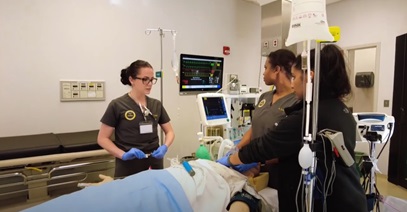With the COVID-19 pandemic, the spotlight is shining on public health, as public health directors and advisors are featured in the news for their leadership and expertise and many others are hard at work behind the scenes. Together, their efforts are making communities safer and healthier, helping to reduce the pressure on the nurses, doctors and other care providers in our healthcare system.
From the start of the health crisis, emergency response directors have been planning and coordinating community responses and been vital in guiding communities to implement and adjust social distancing policies. They’ve also helped essential businesses set operating procedures that protect both employees and customers, including closing early for additional sanitation and providing special shopping hours for high-risk individuals.
As case details come in from around the world, epidemiologists and biostatisticians are collecting and analyzing data to learn about the disease and develop future projections. “Where are these cases coming from? Why did they come from there? Who's most at risk?” says Jason Robertson, Associate Professor and Chair of South University’s Public Health programs and a 20-year veteran of the public health field. “The epidemiologists and biostatisticians are the ones figuring all that out.”
Their models examine the effects of different scenarios and protective actions as well as demonstrate possible impacts on communities and healthcare systems. These projections are then shared with health educators, policymakers, government leaders, public health administrators and other healthcare professionals to inform critical decisions made across the country.
Public health educators and communicators are also doing their part, disseminating information on everything from hand-washing best practices to advice on how to cope with stress. “The #AloneTogether commercials are an example of a public health campaign,” Robertson says. “Health educators and health communicators develop these and other campaigns to get out precise and accurate information so that people understand what’s happening and what to do.”
At the same time, people in public health policy are investigating how COVID-19 is impacting other aspects of healthcare. Are care providers offering effective telehealth services and are insurance companies covering it? How are organizations handling sick leave, and how is that impacting communities? What policies would be most beneficial to people right now and into the future as our society recovers?
Across the board, what ties together these roles and every public health professional is the central tenet of the public health field – a dedication to protecting the health of people in their communities. In public health, the goal is always to improve society’s quality of life. Long before the pandemic started, public health professionals have been working to understand and address the causes of health conditions and disparities, as well as finding innovative ways to promote healthy behaviors through educational programs, community outreach and policy.
“Public health professionals support health in its broadest terms – social, mental and emotional. We look at the environment in which a person lives along with the policies that impact individuals,” Robertson explains. “We study and solve health problems in an ecological framework that involves more than just what one thing is affecting you at this moment.”
In the weeks and months ahead, public health professionals will continue to be involved in the work towards a vaccine, the ongoing tracking of the virus, and the planning for relaxing guidelines for businesses and communities when it is safe to do so. Already, as a result of the efforts of public health professionals, the United States has achieved meaningful changes that are helping to flatten the curve, reduce the spread of the disease and save lives – reinforcing that this field is invaluable to our towns, states and nation. No matter what lies ahead, one thing is sure – public health professionals will continue to be there working with people and communities to help us get through it safely.




